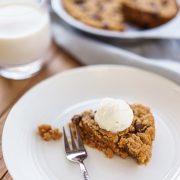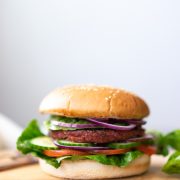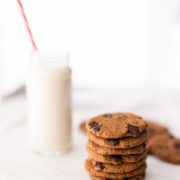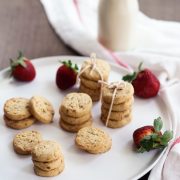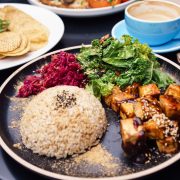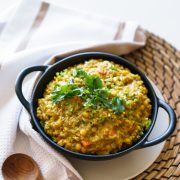As I become more and more aware of our impact to the environment, I started to be more conscious as a consumer. Everything we do affect the environment. From our choice of food, our wastes, our transportations, our houses, our clothes, everything.
The good thing is, sustainable design movement is on the rise, and I am hopeful that the future will be filled with more sustainable, environmentally-friendly generations of people.
In this interview post, I sat down with one of my favourite designer, Julia Denes.
Julia Denes is a Sydney-based, Australian designer and the Founder of Woodfolk, a sustainable and ethical jewellery, homewares and accessories brand that works in collaboration with artisans in Nepal to handcraft its pieces from sustainable materials such as ceramic and Nepalese hardwood. She spent many years working as a qualified jeweller, designer and gemmologist in Sydney before launching Woodfolk in 2013. I absolutely love Julia’s work – the earthy tones, the organic, elegant forms, and the simple yet striking lines that commands attention. It brings me joy knowing these beautiful pieces are created sustainable and ethically. Here’s Julia…

Hi Julia, thank you for spending the time Just a warm up question, what did you have for breakfast this morning and why?
I always start my mornings with a Green Smoothie for brekky. I feel it helps me start my day on a healthy foot.
We know that you’re an uber-talented designer. Tell us something about you that most people might not know?
I love rom coms, eating chocolate, going to markets, singing in the car, going out for brunch on weekends. This is pretty much everything I do in my spare time.

Have you always wanted to be a jeweller/designer? What was your childhood dream?
I always knew I wanted to do something artistic, as I enjoyed it and it came naturally. I knew I wanted to be a jeweller when I spent two years travelling around the world and started making jewellery along the way with whatever materials I could find.
I can’t quite remember but I have a vague recollection of wanting to be a hairdresser as a child.
Tell us about your journey with Woodfolk, what inspired you to start this business?
As a designer and jeweller by trade, I have 10 years’ experience creating Fine Jewellery for prominent Jewellery houses around Australia and for private clients. I loved working with metal, diamonds and gemstones but at some point, started to feel drawn to more natural materials, such as wood and ceramics. Combining this new-found appreciation of these materials with my love of all things natural and ethical, I launched Woodfolk in August 2013. Woodfolk has given me the opportunity to express my creativity and apply my trade in a more authentic way, with inspiration coming from nature, my travels in third world countries and collaborations with the artisans I work with and their cultures. I’m proud to say that Woodfolk is now stocked in more than 70 stores around Australia, and over the last 4.5 years has developed a strong and loyal following.
What is the biggest challenge of running an ethical business?
Initially before launch, I found it a challenge to find the right people to work with overseas. I could have easily gone somewhere like China, India or Bali to work with a factory, not even needing any face to face contact, however that defeated the purpose of my business. I wanted to make it more personal and was looking to work with a family or an organisation that I respected. I chose Nepal because it felt like a good fit and I had always wanted to travel there. After doing months of research on materials available and skills of the local people, I booked a month-long trip there to give myself plenty of time.
The wonderful thing about Nepalese people is how open they are to helping you. From when I arrived, I found that they always made time to meet me, would always take my request seriously and if they couldn’t help, would provide details of someone that might be able to. I followed my instinct which eventually led me to exactly who I was looking to work with.

Tell us why people should support ethical businesses, and what can we do to ensure that we are not supporting businesses with unethical practices?
Like the Fashion Industry, jewellery has its own issues regarding the supply chain in terms of transparency around where its manufactured. Often, these products are made in China or neighbouring countries where cheap labour can be exploited and unfortunately, there hasn’t been much insight or transparency come through about the conditions of these factories.
I see transparency as being just as important as the design and the designer. From start to finish, one item might touch the hands and use the skills of 20 people so every customer has a right to know where their items are truly coming from. It’s my personal belief that people are inherently good and caring and that few would want to think that their purchases have been made in a sweatshop under terrible conditions. For too long, consumers have been kept in the dark about the supply chain. Transparency lifts the veil on a brands’ practices and allows consumers to factor in their behaviour as a global citizen into the purchasing decision.
As an ethical business, I hope to inspire other brands and business owners by providing a working model of what a fair trade and ethical business can look like. We demonstrate that working directly, personally and respectfully with our artisans and their families, using only natural materials that nature has provided us with, can be both fulfilling and profitable. Consumers should be asking brands where their products are manufactured and global movements such as Fashion Revolution are a true driving force behind consumer awareness around supply chain transparency.
Your design is so unique (and beautiful), tell us a bit about your creative process, including how you choose the material for your jewellery and your homewares?
Each piece is a collaboration between myself and our artisans in Nepal. All pieces are designed in my studio in Sydney, which can take anywhere between 1 and 3 months as there’s a lot of consideration and refining that takes place during this time. After the design work is complete, I will either travel to Nepal or send my designs over and from there finalise the design with our artisans. This is an important step as it is a demonstration of our collaboration – I want to know their opinion about the design and whether they think the materials, sizes, shapes are suitable and possible. I try to travel to Nepal as often as I can. When I go, it is essentially about making samples, but it is also about bonding and deepening our relationships, which is something you can’t do through a computer. Once the wood pieces are finished, these are sent back to me in Australia or if I have visited, I will take them home with me. Each item is then completed and finished in my studio. This includes all ceramics, silverwork and stringing. There’s a beautiful synergy in the process and collaboration of our pieces that make us different to other businesses.
The materials used are just as important as the pieces created. As a sustainable business with ethical practices, I use materials such as wood, ceramic, cotton, linen and nettle that nature has provided us with, without having to look too hard to find them, and without needing to fabricate them ourselves. These materials go through the cycle with us, and when no longer needed, can be turned into something else, or recycled.
What does a typical day in your world look like?
I don’t really have a typical day, however, mornings generally start with emails and a smoothie. Days can be filled with getting orders ready and sent; preparing for different design markets and trade shows; liaising with stockists and contacting new stores; developing new ideas to build on the Woodfolk range; photoshoots; all the usual business stuff; lots of cups of tea and the list goes on.

What inspires you? Where do you get most of your inspirations for your design?
I feel I’m inspired by different things each day. It could be a person, someone I know personally, someone I work with or someone I read about; it could be a moment walking in nature or a sudden surge of courage; it could be something visual such as a colourful flower, a beautiful photograph; lovely interiors; and every now and then its music, a song that I connect with straight away and play over and over again.
What is your favourite place in the world, and why?
Kangaroo Island, South Australia. The nature, the beaches, the wildlife are incredibly special. It’s all very up close, personal and raw. I camped there for a couple of weeks over Christmas break a few years ago and can’t wait for the opportunity to go back again.
Who is your role model, and why?
I wouldn’t say I have one role model but I am inspired by different people at different times. There are so many amazing people doing amazing things. I’m very inspired by ethical clothing designer Laura Seigel – her documentary Traceable is a must; New Zealand based Gosia Piatek from ethical brand Kowtow clothing; I also love the work of Shannon Sheedy from Dharma Door; and Carly Nance & Rachel Bentley from ethical store The Citizenry.
What are your goals and vision for Woodfolk? Or what can we expect from you in the next few months/year?
We’ve just launched our 7th collection called Earth, which is available now with my stockists and shortly via woodfolk.com.au. Having had a baby late last year, we’re also looking to include 100% cashmere baby blankets into our ongoing range. We’re also looking at the possibility of doing a pop-up store in Sydney sometime soon, so stay tuned!

If you could invite 3 people (historical or current) to a dinner party who would they be?
My Grandmother, Jane Austen, Brene’ Brown
And what would you serve?
I’m going through a pie phase so probably a vegetarian pie with a giant salad and a chocolate dessert.
If you are going to be stranded on an island and could only bring three things with you, what would they be?
A knife, a pot and a blanket
What’s the most influential book (or books) you’ve read to date?
Lord of the Rings by JRR Tolkien. Trust me I know its long, however that book has so much gold in it. The story is quite beautiful and the characters, their heartfelt relationships and their trust in the journey I find very inspiring.
What is one message you wish to share with the world?
Let your heart guide you in everything you do and you’ll be fine!
——–
Some images I took featuring Woodfolk homeware range.



I hope you enjoy this interview with Julia as much as I did. You can find Julia and her gorgeous collection on:
Much love,
Keren x






